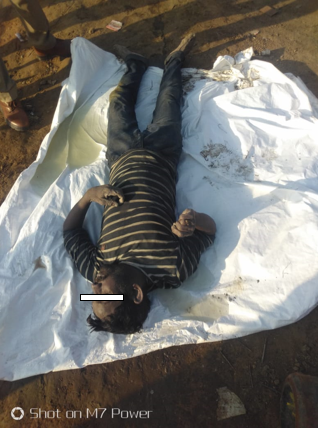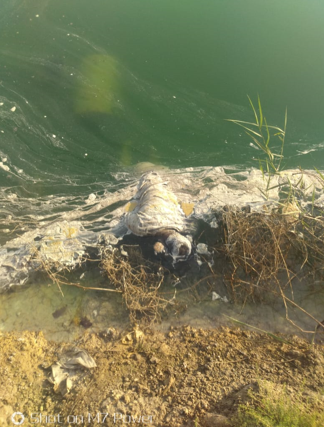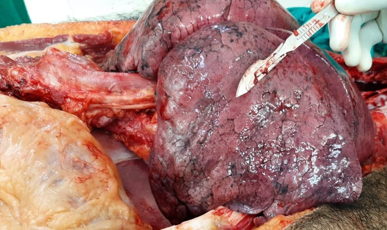Introduction
Mankind has been dependent on water for its survival since its inception. We need water for drinking to stay alive and for various activities, including agriculture, transport, washing, and recreation. Access to water and the ability to move water from its source to where it is needed are important considerations for any groups making decisions about where they should build their dwellings like villages, towns, and cities were located near fresh water sources like rivers, lakes, and oases.
However, despite such protracted association with water humans could not develop the ability to survive in water resulting in mishap termed as drowning. Drowning is defined as a form of asphyxia due to submersion in a liquid.1 Drowning can be further classified into typical or wet drowning and atypical or Dry drowning. Dry drowning is defined as one where water does not enter the lungs due to laryngeal spasm or vagal mediated cardiac arrest induced by small amount of water entering the larynx.2 It is common in cold water.
Drowning is largely an asphyxial process with effects on multiple organ systems. The lungs, the anatomic center for respiration, are the primary organs affected by drowning. Respiration is an involuntary process under the control of the central nervous system in response to changes in blood and tissue oxygen (O2) and carbon dioxide (CO2) levels and the blood pH. Diffusion and exchange of these gases occurs across the alveolar-capillary membrane interface propelled by inhalation and exhalation. Activation of the laryngeal nerves by potentially obstructing foreign objects or fluids can trigger larygospasm, a protective mechanism. Prolonged obstruction at any level can lead to low or absent organ/tissue oxygen levels (hypoxia or anoxia) and low arterial blood oxygen levels (hypoxemia). Ultimately leading to irreversible neuronal cell injury and cardiorespiratory arrest results.3
The diagnosis of drowning is one that is based largely on accrued supportive autopsy findings with the exclusion of other causes of death, interpreted within the context of features of the death circumstances. Diatoms, though a good supportive evidence are known for their ubiquitous nature being found in natural bodies of water, soils, and even tree bark and can also enter lung tissue passively during prolonged submersion. Furthermore, certain diatom species are unique to freshwater and saltwater environments with concentrations affected by conditions inherent in the water, which could have direct bearing on interpretation regarding drowning location.4
Case history
Dead body of a 32-year-old male factory laborer was found floating in the industrial water treatment plant of the factory where he worked in a nearby town. The body was referred to department of Forensic Medicine, PGIMS, Rohtak for postmortem examination by forensic expert and an application for the same was moved by the police. On enquiry it was found that the laborer had gone to factory for overtime on Sunday and had not returned since that day. A missing report had been registered on his name for the same. Apparent cause of death as per police inquest was Paani main dubne ke karan.
Postmortem findings
Dead body was of a male individual wrapped in white plastic palli. The body was wearing: 1. A reddish brown half sleeved sweater. 2. A brown, yellow and greenish coloured design pattern shirt which was worn off at places. 3. A brownish coloured sando baniyan which was worn off at places. 4. A blue coloured jeans pant with hooks and zipper at the front, closed in situ. A brown coloured belt with a metallic buckle was present in the loops of the pant. 5. A green coloured lower with nada tied at waistline which was worn off at places. 6. A brown coloured underwear with elastic waistline which was worn off at places. A white coloured beaded mala was present loosely around the neck. A yellowish metallic ring was present in the ring finger of right hand. A greyish coloured thread in form of janeu was present loosely across the chest and abdomen. A greyish coloured thread was present loosely around the waistline. The clothes were wet, smudged with mud and water. Length 164 cm. Rigor mortis had passed off and body showed dark discolouration at places. The scalp and the skin over the body showed dark discolouration at places. Body was smudged with mud at places and it was emitting foul smell. Scalp hairs were black, 5 to 6 cm long and peeled off with mild traction. Both eyes were closed. Mouth was closed. Facial features were bloated but identifiable. Moustaches 1 to 1.5 cm long Beard 1 to 1.5 cm long. Epidermis was peeled off at places. The chest was tense. Abdomen was distended. Pubic hairs were 3 to 4 cm long, black and curly and pluckable with mild traction. Lungs were voluminous with rib markings and petechial hemorrhages on outer surface and congested on cut section. All the other viscera were softened and discoloured. Mucosa was putrefied. GI tract contained partially digested food and faecal matter. No external or internal injury was appreciable over the body during the postmortem examination. Viscera was preserved for chemical analysis and left humerus bone for diatom test. IO is instructed to collect 2 litres of water from the site, wherefrom the body was recovered and send it for diatom test along with the left humerus bone.
After postmortem examination final cause of death was kept pending for want of reports of chemical analysis of viscera, diatom test report, crime scene report and photographs of the scene of crime. Time elapsed between death and postmortem examination was opined to be about five days.
Few months later the reports of chemical analysis of viscera, diatom test report, crime scene report and photographs of the scene of crime was received along with CCTV footage of factory compound. The report of chemical analysis of viscera showed “No common poison was found in the samples preserved”, the diatom test report stated “Diatom were detected in water sample but diatom could not be detected in humerus bone.” The crime scene report stated “The water area in which deceased body had been found had depth (water level) approx. 7-8 feet deep” and CCTV footage showed the deceased lifting a drums from factory and placing them just beside the water tank where his body was found and there is no other person around in the area. After considering the above reports the board of doctors opined that no definitive scientific opinion could be given regarding cause of death in this case, however circumstantial evidence should be given due credence. Further the police after due inquiry came with the query that could this be a case of drowning. Considering that there were no injuries over the body of deceased, all reports were negative, questionable specificity of diatom test and the fact that the time of incidence was winter where temperature of water could be very low, the possibility of diatom negative drowning or dry drowning cannot be ruled out.
Discussion
Typical or wet drowning can be identified by postmortem changes in the lungs and respiratory tract. Moreover, diatom test can provide an additional supportive evidence for the same. However, the tables turn in cases of atypical or dry drowning where although the external examination may be suggestive of drowning, neither the internal dissection of body shows typical changes in lungs, nor the diatom test is supportive. Under these circumstances the onus of scientifically deciphering the cause of death lies on the forensic expert based on history, crime scene investigation, laboratory investigations and circumstantial evidence along with postmortem findings.
Conclusion
When dealing with water-related death and presuming it has occurred as a result of a drowning, by accident or other means, a comprehensive investigation must be performed to ensure scientific evidence based conclusions. New sources of evidence like CCTV footage, immunohistochemistry must be inculcated if facilities are available and multidisciplinary approach with an open mind is required for the gathering of vital pre-autopsy information, which provide context within which the forensic expert can interpret a meticulously conducted autopsy to rule out any foul play or criminality.



